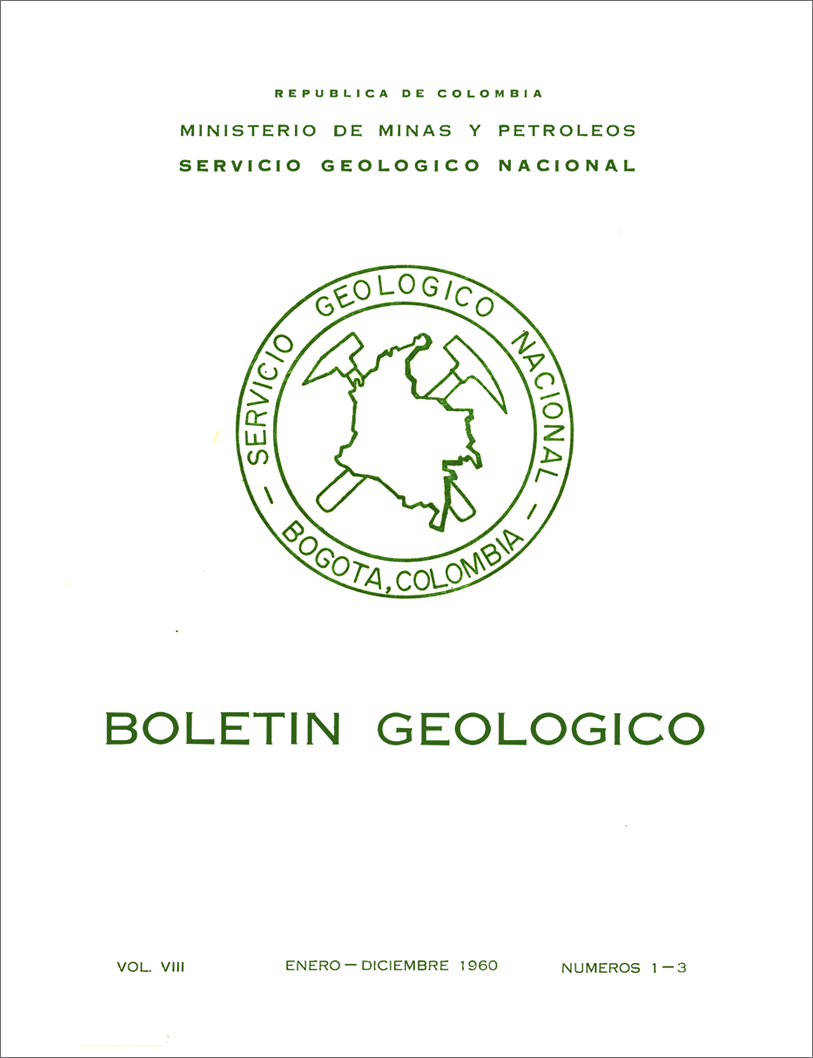Conglomerates, transgressions, regressions, hiatuses, and facies in relation to tectonic upliftings
DOI:
https://doi.org/10.32685/0120-1425/bolgeol8.1-3.1960.360Keywords:
Colombia, sedimentary basins, lithological correlation, orogenic movementsLicense
Copyright (c) 1960 Servicio Geológico Colombiano

This work is licensed under a Creative Commons Attribution 4.0 International License.
Downloads
How to Cite
Issue
Section
Published
Abstract
The phenomena referred to in the title of this study are interconnected by physical events of probable occurrence in nature. To promote a realistic approach to the phenomena discussed, the unfolding of physical processes in time is elaborated mathematically. However, the mathematical assumptions and deductions have only an illustrative function; they should only guide the thinking and are not intended to cover the wide field of all possibilities. The author is under the impression that on this basis, a sharper analysis can be achieved and thus stimulate the formation of clearer concepts because geological events are not in their essence physical processes that follow one another in space and time, forming the framework for living beings which adapt to their environment as they evolve.
On the other hand, this study is restricted to marine and large freshwater basins. The possibilities and shortcomings of lithological correlation and the relationships between lithological boundaries and isochrone planes are discussed. Some peculiarities of redeposited fossils and possible relationships between faunas and structural uplifts are briefly outlined. We find the current geological terminology deficient for the adequate description of various situations. We propose some terms collected and defined in the Glossary.









